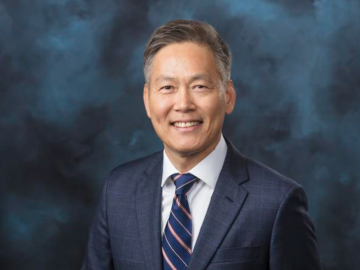
Filter News
Area of Research
- Advanced Manufacturing (6)
- Biology and Environment (21)
- Clean Energy (45)
- Computational Biology (1)
- Computational Engineering (2)
- Computer Science (3)
- Fusion and Fission (10)
- Fusion Energy (8)
- Isotopes (9)
- Materials (77)
- Materials Characterization (2)
- Materials for Computing (14)
- Materials Under Extremes (1)
- Mathematics (1)
- National Security (13)
- Neutron Science (24)
- Nuclear Science and Technology (5)
- Quantum information Science (4)
- Supercomputing (52)
News Type
News Topics
- (-) Biomedical (28)
- (-) Clean Water (15)
- (-) Cybersecurity (20)
- (-) Fusion (23)
- (-) Isotopes (23)
- (-) Materials (92)
- (-) Microscopy (27)
- (-) Quantum Science (36)
- (-) Summit (27)
- 3-D Printing/Advanced Manufacturing (74)
- Advanced Reactors (23)
- Artificial Intelligence (44)
- Big Data (24)
- Bioenergy (39)
- Biology (39)
- Biotechnology (10)
- Buildings (32)
- Chemical Sciences (38)
- Climate Change (44)
- Composites (19)
- Computer Science (98)
- Coronavirus (28)
- Critical Materials (23)
- Decarbonization (28)
- Education (3)
- Element Discovery (1)
- Energy Storage (73)
- Environment (79)
- Exascale Computing (10)
- Fossil Energy (2)
- Frontier (16)
- Grid (36)
- High-Performance Computing (39)
- Hydropower (6)
- Irradiation (2)
- ITER (5)
- Machine Learning (24)
- Materials Science (84)
- Mathematics (2)
- Mercury (5)
- Microelectronics (1)
- Molten Salt (7)
- Nanotechnology (38)
- National Security (21)
- Net Zero (5)
- Neutron Science (76)
- Nuclear Energy (45)
- Partnerships (30)
- Physics (28)
- Polymers (21)
- Quantum Computing (13)
- Renewable Energy (1)
- Security (12)
- Simulation (15)
- Space Exploration (13)
- Statistics (2)
- Sustainable Energy (75)
- Transformational Challenge Reactor (4)
- Transportation (60)
Media Contacts

Andrew Lupini, a scientist and inventor at ORNL, has been elected Fellow of the Microscopy Society of America.

A study led by Oak Ridge National Laboratory researchers identifies a new potential application in quantum computing that could be part of the next computational revolution.

Marm Dixit, a Weinberg Distinguished Staff Fellow at ORNL has received the 2023 Rosalind Franklin Young Investigator Award.

Researchers at ORNL have developed a machine-learning inspired software package that provides end-to-end image analysis of electron and scanning probe microscopy images.

Ho Nyung Lee, a condensed matter physicist at the Department of Energy’s Oak Ridge National Laboratory, has been elected a Fellow of the Materials Research Society.

Mickey Wade has been named associate laboratory director for the Fusion and Fission Energy and Science Directorate at the Department of Energy’s Oak Ridge National Laboratory, effective April 1.

A technology developed at ORNL and used by the U.S. Naval Information Warfare Systems Command, or NAVWAR, to test the capabilities of commercial security tools has been licensed to cybersecurity firm Penguin Mustache to create its Evasive.ai platform. The company was founded by the technology’s creator, former ORNL scientist Jared M. Smith, and his business partner, entrepreneur Brandon Bruce.

Warming a crystal of the mineral fresnoite, ORNL scientists discovered that excitations called phasons carried heat three times farther and faster than phonons, the excitations that usually carry heat through a material.

A study by Oak Ridge National Laboratory researchers has demonstrated how satellites could enable more efficient, secure quantum networks.

Researchers from Yale University and ORNL collaborated on neutron scattering experiments to study hydrogen atom locations and their effects on iron in a compound similar to those commonly used in industrial catalysts.


